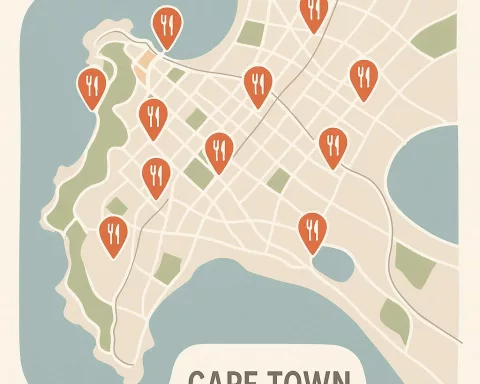The South African Reserve Bank (SARB) has maintained its steady repo rates, despite global economic fluctuations. Led by Governor Lesetja Kganyago, SARB’s decisions have a profound impact on the financial ecosystems of South Africa. The decision to uphold the current repo rate reflects its long-term vision for the country’s fiscal health, with the goal of striking a balance between stability and growth. SARB’s unwavering approach serves as a beacon of direction amid the sea of uncertainties in the global economy.
Central Banks Take Center Stage in the Global Economy
In the ever-changing landscape of the global economy, central banks have emerged as the key players. Their decisions and strategies have a profound impact on the financial ecosystems of their respective nations. Among these central banks is the South African Reserve Bank (SARB), led by Governor Lesetja Kganyago, which steers South Africa’s monetary waters with a steady hand.
SARB Holds Firm on Repo Rate
In its latest monetary policy update, SARB’s Governor Kganyago announced the decision to maintain the repo rate. This decision exemplifies the SARB’s persistent approach, which remains unwavering despite the fluctuating inflation rates. The repo rate is a critical tool in the central bank’s arsenal, indicating the rate at which commercial banks can borrow money. Its impacts are far-reaching, influencing consumer spending patterns and the overall economic growth trajectory.
Long-Term Vision for Fiscal Health
The Monetary Policy Committee’s unanimous decision to uphold the current repo rate reflects its long-term vision for the country’s fiscal health. This strategy aligns with that of European central banks, such as the European Central Bank (ECB), which sets the refi rate for the Eurozone. Both rates serve as accurate indicators of the financial climate of their respective regions, influencing lending and investment conditions.
Interconnectedness in the Global Fiscal Fabric
As nations like Cyprus navigate the ECB’s policy decisions, they find resonance with South Africa’s financial measures, hinting at an interconnectedness in the global fiscal fabric. The SARB’s announcement stirred up different sentiments among the public, sparking conversations around high-interest rates and the complex interplay between repo rates and market liquidity.
Public Engagement with Economic Developments
The discussions around the SARB’s decision revealed diverse perspectives on the implications of rate cuts and reverse repo operations. The drop in inflation in December has led to anticipations of a reassessment of the current repo rate. This public engagement with economic developments showcases a keen understanding of the intricate links between central bank decisions and the everyday financial dynamics.
SARB’s Careful Navigation Through Economic Crosswinds
As monetary policy decisions continue to impact the lives of millions, the SARB’s careful navigation through these economic crosswinds deserves recognition. The goal to strike a balance between stability and growth remains at the forefront of the central bank’s mandate. Each rate announcement undergoes meticulous scrutiny.
A Beacon of Direction Amid Uncertainties
As different central banks grapple with similar challenges, the SARB’s unwavering approach serves as a beacon of direction amid the sea of uncertainties. South Africa’s untapped potential, situated within the global economic framework, stands ready for a forward journey, anchored by the SARB’s steadfast resolve.
1. What is the repo rate and why is it significant?
The repo rate is the rate at which commercial banks can borrow money from the central bank. It is a critical tool in the central bank’s arsenal, influencing consumer spending patterns and the overall economic growth trajectory.
2. Why has SARB maintained its steady repo rates?
SARB has maintained its steady repo rates despite global economic fluctuations because it reflects its long-term vision for the country’s fiscal health. The goal is to strike a balance between stability and growth.
3. How does SARB’s decision to uphold the current repo rate reflect its long-term vision?
The Monetary Policy Committee’s unanimous decision to uphold the current repo rate reflects its long-term vision for the country’s fiscal health. This strategy aligns with that of European central banks, such as the European Central Bank (ECB), which sets the refi rate for the Eurozone.
4. What is the public’s perspective on SARB’s decision to maintain the repo rate?
The discussions around the SARB’s decision revealed diverse perspectives on the implications of rate cuts and reverse repo operations. The drop in inflation in December has led to anticipations of a reassessment of the current repo rate. This public engagement with economic developments showcases a keen understanding of the intricate links between central bank decisions and the everyday financial dynamics.
5. How does SARB’s approach serve as a beacon of direction amid global uncertainties?
SARB’s unwavering approach serves as a beacon of direction amid the sea of uncertainties in the global economy. As different central banks grapple with similar challenges, South Africa’s untapped potential, situated within the global economic framework, stands ready for a forward journey, anchored by the SARB’s steadfast resolve.









